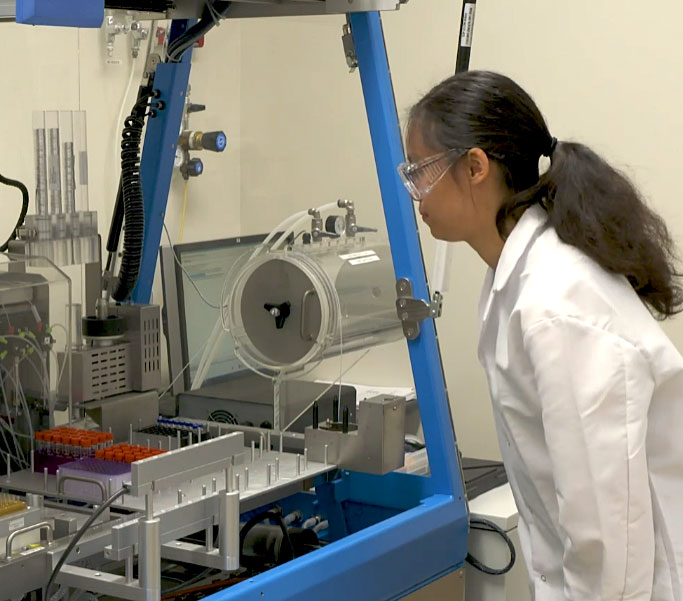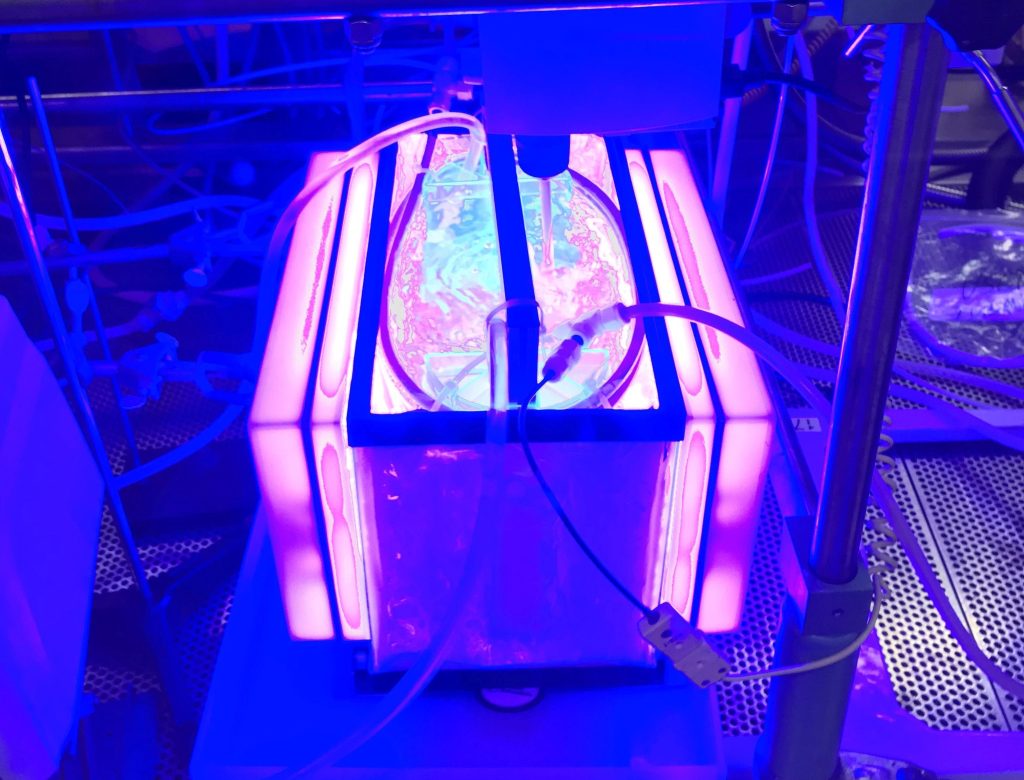How one woman’s diverse team is driving innovation in science and medicine
Rebecca Ruck is breaking down silos and leveraging diversity to invent smarter and greener ways to produce medicine
January 26, 2021

Science. Teamwork. Impact.
These are the reasons why after nearly 16 years at the company, Rebecca (Becky) Ruck is still excited to come to work every day.
As executive director, process R&D enabling technologies, she’s responsible for developing innovative ways to produce our medicines. It takes both talent and commitment.

“Our people allow us to deliver amazing science, and our science attracts all these wonderful people. They go hand-in-hand.”
Rebecca Ruck
Diversity of thought and talent drives innovation
For Becky, teamwork is key. She’s seen what groups of people with different skillsets and experiences — and a unified goal – can accomplish. So, in 2018, when she was tapped to create the enabling technologies group, she made sure it was diverse.
“I sort of fashioned it as an incubator of scientific talent, bringing together biologists, chemists and engineers,” says Becky.
In addition to different areas of expertise, the group also has different backgrounds and life experiences – geographically, culturally and professionally.
“Diversity of thought and talent are invaluable to drive innovation; they enable us to generate inventive ideas and develop new technologies,” says Becky.
Inclusion — giving each team member a voice and encouraging them to bring their authentic selves to work – is also vital.
“When we have that combination, we can meet our common goal — to ensure that we can make and manufacture efficiently, cost-effectively and sustainably the drugs invented by our discovery team so that they hopefully can reach the patients who need them.”
Putting molecules together with scientific elegance and creativity
Becky’s team is responsible for developing innovative chemistry processes to produce drug candidates on a large scale – for both clinical trials, and, eventually, commercial manufacturing — all in a way that also minimizes waste production.

Often charged with “simplifying” a chemical synthesis (using chemical reactions to get a product), this group must be creative and bold.
“Everything we do is for the patients. So, we’re constantly working to bring a new perspective or capability online that we can apply to our science,” says Becky. “And, our science is always cutting-edge … we don’t feel hindered by existing ways to make molecules, which means we get to be really creative in how we put the molecules together.”
Taking risks to be smarter, faster and greener
Risk-taking and passion have fueled successful advancements from Becky and her team across a wide range of therapeutic areas, including oncology, antivirals and antibiotics.

And she’s excited by recent innovations such as flow photochemistry (process of using high intensity light to perform chemical reactions in a continuously flowing stream in a tube) and biocatalysis (use of natural substances that include enzymes from biological sources or whole cells to speed up chemical reactions).
“We’ve now run flow photochemistry on hundreds and hundreds of kilograms which, previously, may have seemed impossible,” says Becky.
“With biocatalysis, we’re applying it to pretty much every molecule we see now. I think it’s changing the landscape of synthetic chemistry.”
Becky sees other great opportunities, too. For example, the team is now looking to immobilize some of the enzymes used in biocatalysis, allowing processes to run more efficiently and sustainably.
Impacting the lives of millions
When Becky pivoted to a career in chemistry instead of becoming a medical doctor, she thought she may have lost the opportunity to help people.
“Now I see that the work, the science that I do has the potential to impact many millions of people — many more than I would have helped as a doctor seeing patients on a one-to-one basis.”
She’s been fortunate to see some of that impact.
“I’ve met people who have experienced benefits to their health through drugs I’ve played a role in producing. Knowing that I can have a positive effect on people’s health gets me out of bed each morning. It’s a great feeling.”
And that’s a feeling that never gets old.



